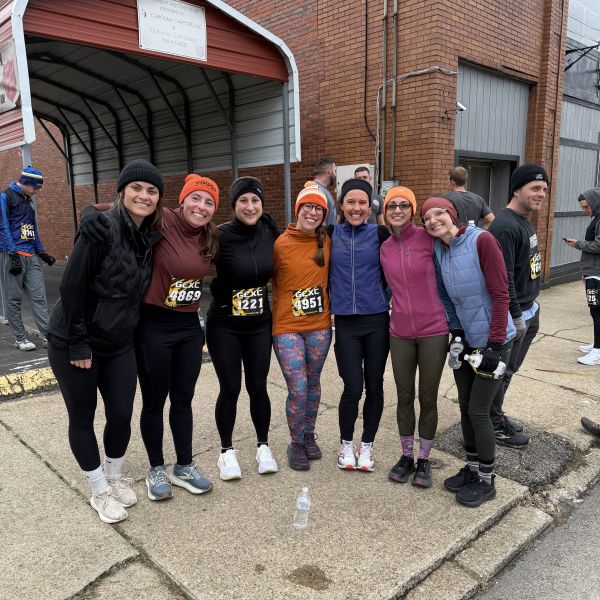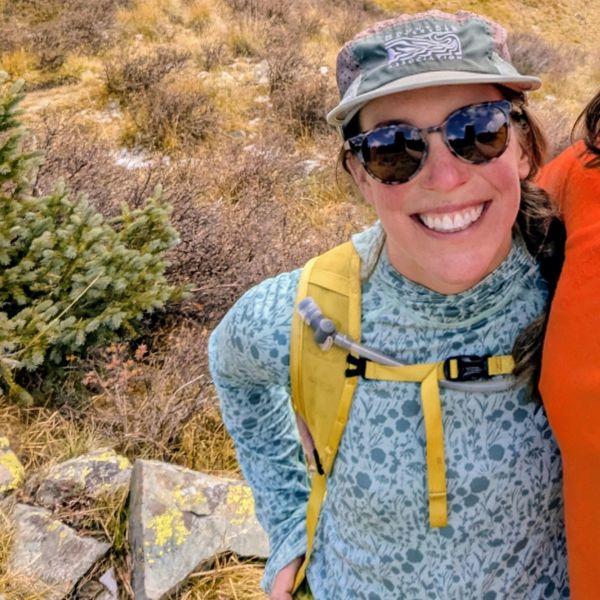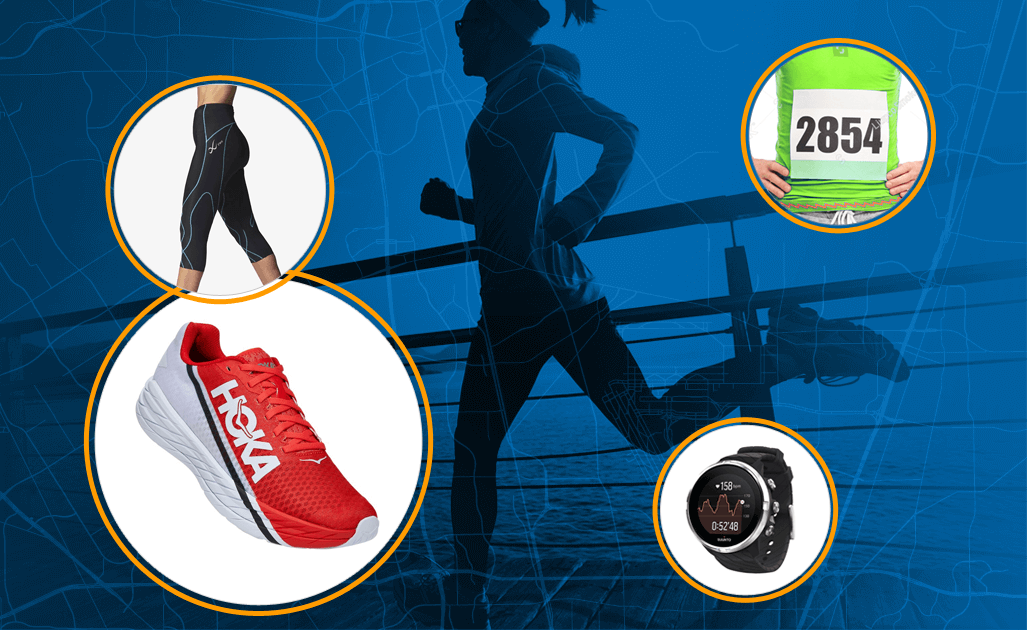Have you ever experienced physical injury or trauma?
If you’re human, the answer is probably yes.
Let’s take it up a notch.
“You won’t be doing what you were doing before the accident,” the doctor told runner Leah Staley.
She was 16 years old, a possibly impressionable age.
Some of us would give up and spiral down a deep, dark tunnel of forlorn depression.
But not Leah.
Sure, she heard what they said. But she remained true to her natural born ability to stay calm, not overreact, follow her intuition and listen without judgment or naive consensus.
Leah Staley grew up in Maryland and spent her weekends and summers in the small whitewater town of Ohiopyle, Penn., home to the Youghiogheny River, Yough for short. She began running the trails there with her mom at eight years old.
“We’d go for a run, go do yoga, then go for a swim in the Yough.”
Every Tuesday and Thursday, she and her mom would attend Yogi Wade Zinter’s by-donation 90-minute hot power yoga class at the Ohiopyle Community Center.
She didn’t know it at the time, but her early days of combining running and yoga were shaping her into the woman she would become.
Even more, running and yoga were instilling within her the invaluable ability to overcome:
“I need to make friends,” Leah told her parents when she asked if she could transfer out of the small private school she attended from ages three to 13.
To Leah’s delight, her parents agreed.
She happily began her freshman year at the public high school. When it came time to sign up for sports teams, Leah thought:
“I have no hand-eye coordination whatsoever, so the soccer team was out. Lacrosse was out. Cross country - I could do that!”
Along with the cross country team, she also joined indoor winter track and field and spring track and field teams.
Her events:
It was six days before her 17th birthday.
She was driving to her best friend’s house on a curvy, back road near Cheat Lake, West Virginia.
“I was driving in a bikini and no shoes because I just got off the river.”
As she came around a sharp turn, an oncoming car was in her lane. She swerved off the road to miss it, and when she tried to right herself and get back on the road, she ended up in the other lane.
“I hit another car head on.”
“The car was really smooshed, but luckily the window was down, so I was able to crawl out. I immediately fell to the ground and put my legs up in the air, and all my toes were facing different directions.”
I thought, “This is really inconvenient. I’m not going to be able to run tomorrow. This is really going to mess up my summer.”
Leah was rushed to the hospital and spent more than a week there.
The damage:
“You should always wear shoes while driving.”
“I went through surgery, and thought, so I’ll be out for a couple weeks, right, yes?”
“No,” the doctors told her, “you’ll be in a wheelchair until Christmas. Then you’ll have months in a walker. Then you’ll be on crutches. You won’t be doing what you were doing before the accident, you won’t be as active, you won’t be racing, you won’t be waking up and running.”
After all, she had plates, screws and pins in her ankle, feet and toes.
Leah spent all of August in a wheelchair.
“In September, I started my senior year of high school in a wheelchair. Luckily the high school had an elevator.”
Soon, Leah grew sick of feeling helpless.
“At some point, I said, ‘I’m over this.’ I began lifting myself up and applying 10 percent of weight to my feet. Then 20 percent."
"Then I would grab onto the couch and walk laps back and forth. I took it real slow. My biggest issue was that all of my muscles atrophied. I was skin and bones and so tired so easily.”
Leah began to feel hopeful.
“I went in for a checkup, and the doctor said, ‘I can tell by your x-rays that you’ve been walking.’ And I was like, ‘I know you told me not to.’ He said, ‘OK, walk out of here then.’ So, I got up and walked.”
While Leah felt she was making progress, the doctors felt annoyed toward the teenage girl with the “I-got-this” attitude.
Even though she was walking sooner than predicted, she still had work to do.
“I started doing PT (physical therapy), and they had me doing all these exercises, and I was going every week, and it was a lot."
"I remember I was on the treadmill walking, and the PT said, ‘we need to do all these things to stimulate all these different things. You need to practice walking on the treadmill to practice walking on uneven ground.’”
Leah, a girl who grew up running outside, was uncertain about the benefit of walking on a treadmill to get her where she needed to be.
“I told them I was at the beach last weekend and walked for three miles, on sand, in bare feet.”
They asked her why she was still here, taking PT. She was thinking the same thing.
“I was already so strong from running and yoga. I had that base to build from. I was doing yoga as soon as I was out of the wheelchair. A couple months after my surgery, I saw my surgeon, and he was amazed at how I was walking.”
Because of the perseverance and self-awareness developed from years of yoga and running, she proved the prognosis wrong and reduced her predicted recovery time of nearly a year to three months.
“I went to my senior homecoming, which was in October, and danced the entire night.”
Still, she was not quite ready to run competitively with the cross country and track teams. Her biggest issues became:
“I did not finish my senior track season.”
Despite knowing that a rigorous training schedule with the team did not suit her condition at the time, she did not give up on running.
“I remember running my senior year. I wasn’t racing, but I was running on my own. There was a loop I used to do from my house. It was all paved roads, because that’s what was near us. I couldn’t finish the run, because my knee hurt so bad.”
Instead of giving up, she reassessed: If a loop of a certain mileage caused pain, perhaps a shorter one would do.
“I tried it again, but shorter, and it still hurt. Again, shorter, and it still hurt during the run, and the whole day in school I would be limping.”
Again, she reassessed: If it hurts running on pavement, perhaps a change of terrain would do.
“I went out to a trail and ran. I had no pain. It had to be running on hard surfaces. So I fucked around with running on pavement for a year or two, asking myself, ‘where is my limit?’ And realized, there is no limit, I can’t run on the road.”
Leah graduated high school and began massage therapy school in October 2011.
More than one year after the accident, her knee was still hurting.
“Any change in atmosphere, and any time it rained, my knee was so painful, I had this little limp. My ankle would get stiff, but my knee would kill me.”
Not only was massage therapy her future career, it turned out to be an unexpected solution to her knee problem.
“We were practicing myofascial release. One of the students was practicing on me, and all of a sudden something popped up so big that it created a shadow and then just went away. ‘What just happened?’ I asked."
He said, "I don’t know!"
Fifty percent of the swelling went down.
The next day, most of the swelling was gone.
"The pain went from excruciating every single day to ‘I’ve got this. It’s not terrible. And I can still run.’”
Things were looking up for Leah.
Finally, she had found relief for her knee, which meant she could pursue her passion of running pain-free again.
She had graduated from massage school and began her career as a massage therapist.
And yet… something else happened, a thing that happens to lots of young adults.
She began drinking.
A lot.
Almost every day.
Inevitably, running and yoga took a backseat to her preference for partying.
But not for long. After a while, she decided to quit.
One evening shortly after sobering up, she was faced with a choice.
“Right after my 23rd birthday, I had my first panic attack, and I would have dealt with that by having a beer, and that just wasn’t an option. I remember there was this ball of energy in me, and I was seriously concerned it was going to explode.”
To deal with it, she chose to run.
“I was shaking so much I didn’t realize I hadn’t tied my shoes until I got down the street and thought, something’s off. And I started running. That was maybe to this day my favorite run ever because it had been so long since I ran, so long since I did anything really intentional.”
It was nighttime, and Leah kept running.
“When I was in high school cross country, my coach drilled in form. That specific night, I remember thinking, square your hips, roll heel to toe, push off with your toe, open up your stride, have your arms at 90 degrees.”
She was in the zone.
“This is it, I feel it, start to breathe, match your breath to your footsteps, to your heart rate. I ended up running 12 miles. It was my first long run ever. My first night run ever. I ran until that ball of energy was not going to explode. And then I turned around to go home.”
It was a pivotal moment.
Running, she discovered, was a means to overcome anxiety and depression after sobriety.
And she was reminded of one of the lessons learned from her accident: you only have one body and taking proper care of it is absolutely crucial.
“I came back to my house, and thought, ‘what am I doing with my life?’”
She moved out of her house and into her car.
“I would wake up every morning with the sun, because when you live out of your car, that’s what you do.”
“I would wake up every morning with the sun, because when you live out of your car, that’s what you do.”
“I’d go to work, take a shower, work all day, go to wherever I could find a yoga class, then by the time I was done practicing yoga, I would crawl into my car and fall asleep and get up and do it all over again.”
She had found a purpose. And sometimes part of that purpose was to wander.
“On my days off, I would go to the Dolly Sods (in West Virginia), look at a picture of the map, and just run. I would not focus on what trail I was on or where I was going. I would run until I was bawling my eyes out."
"I’d write down all of my thoughts while I was running. When it felt late, or I was super tired, I would figure out where I was and get back to my car and review all my notes for the day.”
Most runners can relate to running in order to process day-to-day emotions, and a lot of us can relate to running in order to manage more serious life stuff.
“I don’t understand how people overcome addiction, trauma or depression without running. It kept me sane. It keeps me sane."
"Now, as the years have gone by, maybe it’s summer, and I’m boating every day, or it’s winter, and I’ve been skiing every day, and there is this weird feeling inside of me… oh, it’s because I haven’t run in a couple days.”
“I describe it as, I’m a teapot, and you know when it gets real hot, and it makes that really annoying sound? Running just flips the lid up and takes it off the heat for a little bit.”
If you read that statement out loud to a group of runners, chances are you would see every one of them nodding adamantly in agreement, understanding it completely and wholeheartedly.
One could say that Leah’s accident set the tone for how she approaches running.
Sure, she could picture herself running a marathon, on trail, of course, but she also feels no desire or pressure to commit to such an endeavor. After 15 miles, she begins to worry about her body.
“It's better to do a little of what you love for a lifetime than push your body further than it can go for a short time. My accident forced me to identify my ego. I don't have the option or privilege of "needing" to hit certain miles or time. I do what I can do, and that's good enough.”
Leah does not subscribe to the “no pain, no gain” motto or “bigger, farther, faster is better” philosophies. She slowly and easily builds up to long runs, stops if she feels pain, walks and listens to her body.
“That’s what has kept me doing what I love.”
“Sometimes I worry about the future. Am I doing enough to ensure that my scar tissue doesn't build? Will I experience more pain when I'm 65?"
"Maybe the metal in my foot limits me from doing things, like running 26 miles, but I would argue that my mindset and love for 500 other activities limits me just as much,” she says with a laugh.
One thing is for sure - she’s happy right where she is, pursuing her passions of running, yoga and massage.
Here’s how Leah suggests coping if you ever find yourself in a situation similar to hers, where you’re told that you will not be doing what you once loved to do:
1. Eff that. I know a paraplegic who rafts the Upper Gauley (Class V river in West Virginia). Limitations are a matter of perspective.
2. Go watch the climbing documentary Meru. What a determined body can recover from is amazing.
3. Take it one day at a time.
4. Don't kill yourself. That might be a very overly simplified statement, but when my freedom was abruptly taken away from me, the thought crossed my mind. I'm damn glad that it didn't get farther than that.
Races she’s run
Favorite race
Ohiopyle Falls & Trails Trilogy 10K. Because Betty Knox (formerly known as Kentuck) Trail is the best. There’s this flow to it. It’s open, you go downhill, you get up your speed, then you go uphill. The other part is Tom Faucet, which is a steep and technical trail.
I had danced until 3 a.m. the night before and slept in my running clothes.
Longest run
Around 15-17 miles. Six to 10 is my sweet spot.
Favorite running shoes
Favorite running snacks
Favorite running drink
Water sweetened with maple syrup
Favorite running season
Autumn. It’s cold and yucky and raining, you just go for a run, and you get your endorphins and serotonin and go eat pancakes.
Favorite type of run
Long and slow is probably my least favorite, but I do it because I enjoy the particular high. I love sprint workouts, specifically fartleks on the GAP (Great Allegheny Passage) trail (flat rail trail).
I love the full-body tingles that come with running as fast as I possibly can. I also practice sprints every single time I run.
No matter what kind of run I'm on, I sprint the last 100 meters as if I'm finishing a race. It makes me smile and maybe puke a little if it's hot or I just ate fried food.
Favorite yoga pose to do after a long run
Legs up the "wall,” or tree, car, rock, whatever you can find
About Leah
Leah is a devoted yoga instructor, talented massage therapist and outdoor enthusiast. Her fiery passion for all things adventurous fuses with her career in holistic healing to create a unique outlook on performance enhancement for all athletes. Leah has spent her life prioritizing self love and anything fun. Now, she builds her career sharing a calmer, more connected way of life.
Find her here:






We Want to Give it to You!
